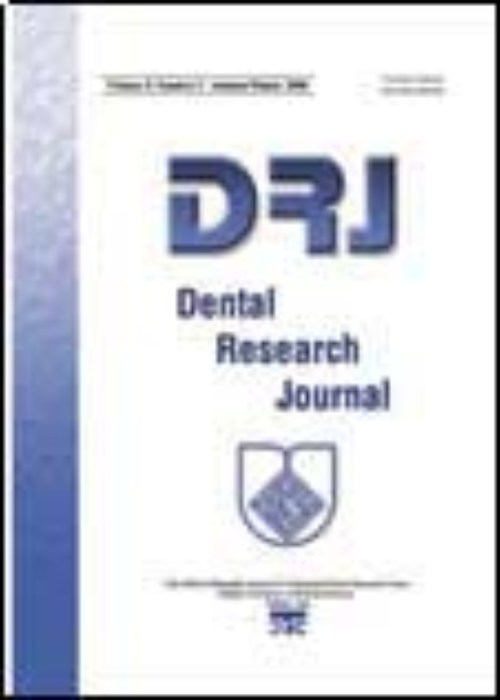Effect of tightening torque on the marginal adaptation of cementretained retained
Author(s):
Abstract:
Background
The fi nal position of the abutment changes with the amount of tightening torque. This could eventually lead to loss of passivity and marginal misfi t of prostheses. The aim of this study was to evaluate the effect of three different tightening torques on the marginal adaptation of 3-unit cement-retained implant-supported fi xed dental prostheses (FDPs).Materials And Methods
Two implants (Straumann) were inserted in an acrylic block so that one of the implants was placed vertically and the other at a 15° vertical angle. A straight abutment and a 15° angulated abutment were connected to the vertically and obliquely installed implants, respectively, so that the two abutments were parallel. Then, 10 cement-retained FDPs were waxed and cast. Abutments were tightened with 10, 20, and 35 Ncm torques, respectively. Following each tightening torque, FDPs were luted on respective abutments with temporary cement. The marginal adaptation of the retainers was evaluated using stereomicroscope. FDPs were then removed from the abutments and were sectioned at the connector sites. The retainers were luted again on their respective abutments. Luting procedures and marginal adaptation measurement were repeated. Data were analyzed by ANOVA and least signifi cant difference tests (α = 0.05). After cutting the FDP connectors, the independent samples t-test was used to compare misfi t values (α = 0.05).Results
Following 10, 20, and 35 Ncm tightening torques, the marginal discrepancy of the retainers of FDPs signifi cantly increased (P < 0.05). There was no signifi cant difference between the marginal discrepancies of these two retainers (P > 0.05). The marginal gap values of angulated abutment retainers (ANRs) were signifi cantly higher than those of the straight abutment after cutting the connectors (P = 0.026).Conclusion
Within the limitations of this study, the marginal misfi t of cement-retained FDPs increased continuously when the tightening torque increased. After cutting the connectors, the marginal misfi t of the ANRs was higher than those of the straight abutment retainers.Keywords:
Language:
English
Published:
Dental Research Journal, Volume:12 Issue: 4, Jul 2015
Page:
359
magiran.com/p1427143
دانلود و مطالعه متن این مقاله با یکی از روشهای زیر امکان پذیر است:
اشتراک شخصی
با عضویت و پرداخت آنلاین حق اشتراک یکساله به مبلغ 1,390,000ريال میتوانید 70 عنوان مطلب دانلود کنید!
اشتراک سازمانی
به کتابخانه دانشگاه یا محل کار خود پیشنهاد کنید تا اشتراک سازمانی این پایگاه را برای دسترسی نامحدود همه کاربران به متن مطالب تهیه نمایند!
توجه!
- حق عضویت دریافتی صرف حمایت از نشریات عضو و نگهداری، تکمیل و توسعه مگیران میشود.
- پرداخت حق اشتراک و دانلود مقالات اجازه بازنشر آن در سایر رسانههای چاپی و دیجیتال را به کاربر نمیدهد.
In order to view content subscription is required
Personal subscription
Subscribe magiran.com for 70 € euros via PayPal and download 70 articles during a year.
Organization subscription
Please contact us to subscribe your university or library for unlimited access!


